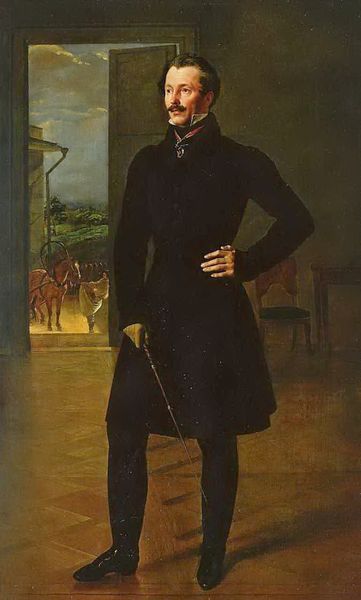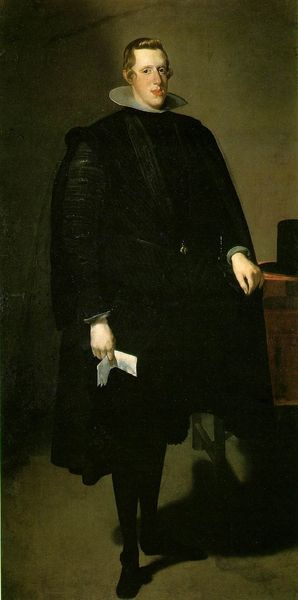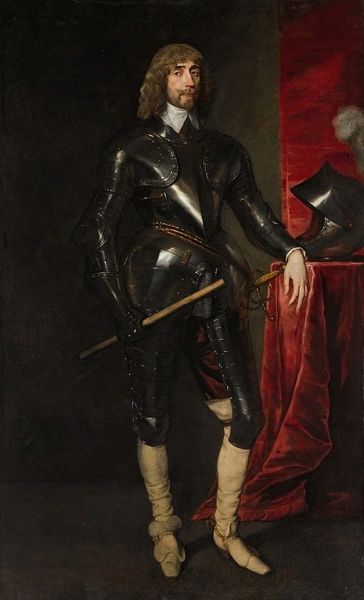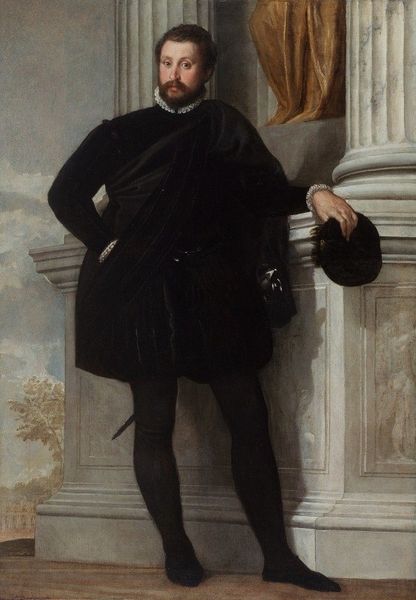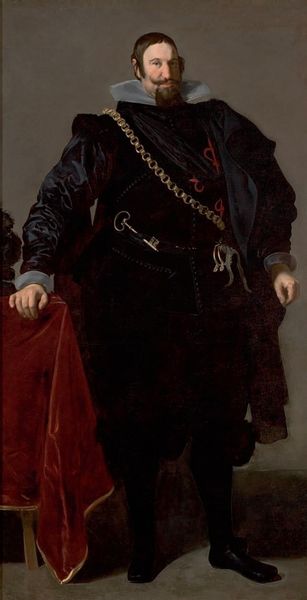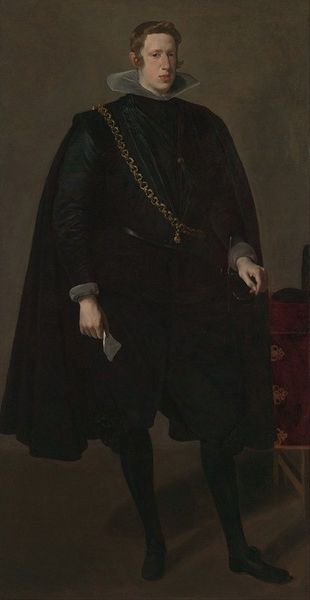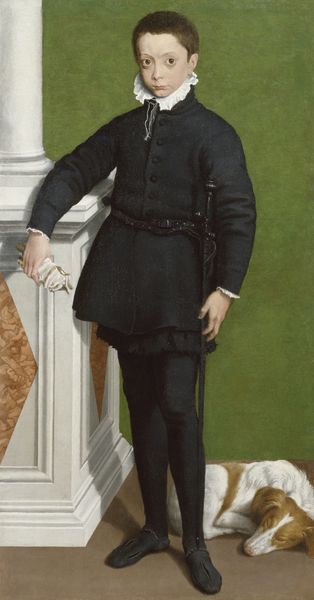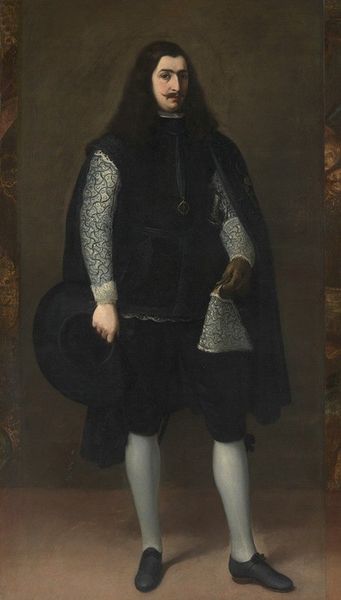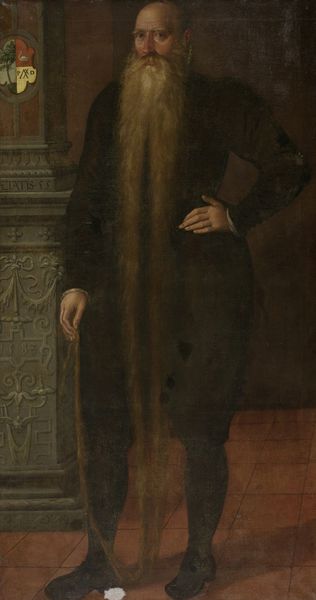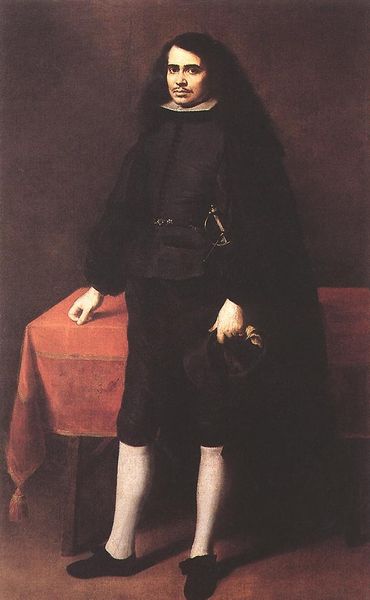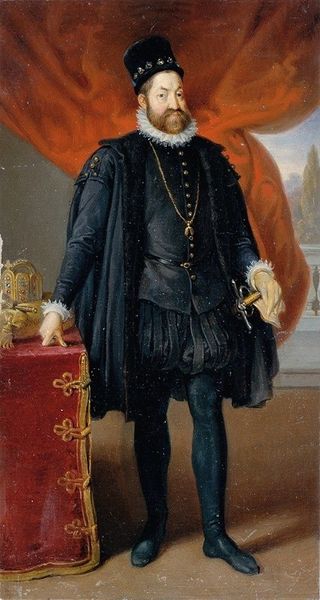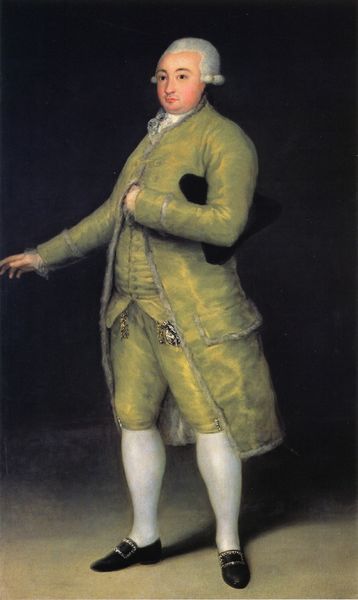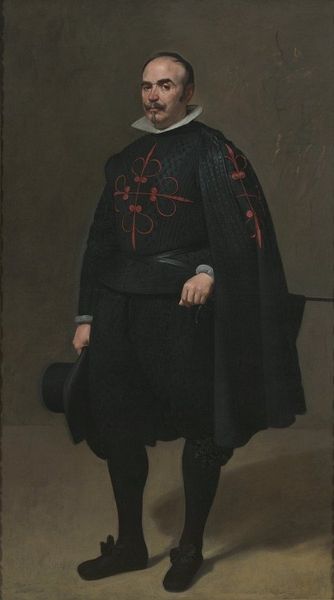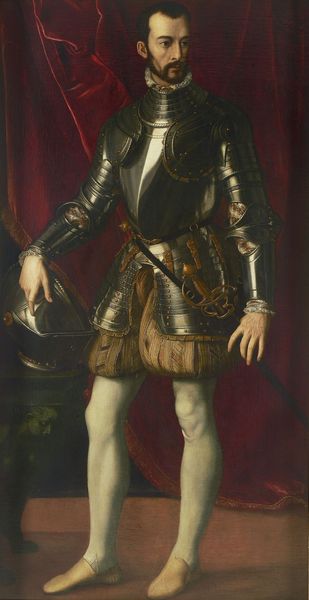
painting, oil-paint
#
portrait
#
figurative
#
baroque
#
painting
#
oil-paint
#
figuration
#
11_renaissance
#
italian-renaissance
Copyright: Public Domain: Artvee
Curator: Standing before us is the striking “Portrait of Nicolò Doria,” attributed to Jacopo Tintoretto. Editor: My first impression is one of understated power. He's draped in black, almost severe, but there's an undeniable air of confidence. It projects authority. Curator: Indeed. This somber attire was typical for the Genoese aristocracy, conveying gravitas and social standing. Notice how Tintoretto contrasts the rich red curtain backdrop against the figure's severe austerity. Doria's attire isn't just clothes; it's a statement, meticulously constructed to signal dominance in 16th-century Genoese society. Editor: The drape itself feels significant, beyond just being decorative. Red has so many potent connotations: passion, sacrifice, courage, even anger. Is this meant to hint at a more complex inner life beneath the stoic facade? The color is practically vibrating with intensity next to Doria’s darkness. Curator: I think so. Consider, too, the sword—more than mere accessory. In Renaissance portraits, swords symbolize not only noble status but also civic duty and defense of the Republic. Nicolo Doria held key military and political roles; this sword represents active participation in Genoa's affairs, securing his place within its socio-political fabric. Editor: Right. And the hand gestures—one casually on his hip, the other gently holding the sword—feel equally studied, like a performance of power meant for public consumption. Does Tintoretto perhaps imbue him with a touch of ambivalence? Curator: Perhaps a trace, because no symbolic language can control every reading. This portrait offers us insights into how identity was crafted and conveyed during that era. And Doria knew that a carefully composed image, broadcasted correctly, could cement legacy. Editor: Looking closer, the portrait becomes less about inherent virtue and more about a strategic negotiation with the viewer. As though power always has to stage itself to be believable. Well, that leaves me thinking about how people continue to craft their image to maintain societal position, regardless of epoch. Curator: A constant in human history, isn’t it? An impactful reflection that this artwork offers, through both the iconographic tradition and cultural record it gives.
Comments
No comments
Be the first to comment and join the conversation on the ultimate creative platform.
